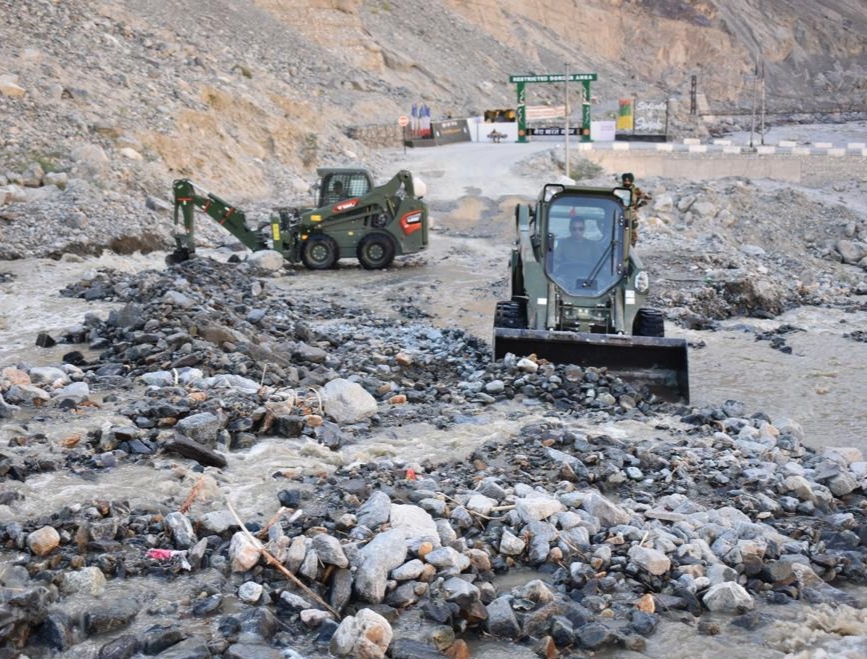Several tourists in Ladakh were stranded on Sunday when a flash flood devastated the road network in India’s north most and militarily significant Turtuk and two other villages near the Line of Control (LOC).
The Ladakh based Fire & Fury Corps of the Indian Army has swung into action to restore the roads and reconnect the three villages that are tourist attractions.
Advertisement
The flash-flood came five days after a similar one hit parts of the Leh town and neighbouring villages due to glacier and snow melt.
The Fire & Fury Corps tweeted; “Lifeline for the people of Turtuk, Tyakshi & Thang villages, #Ladakh got washed away by sudden flash floods in the valley, caused by the seasonal melting of snow cover. #Siachen Warriors came to rescue by reviving the axis of commute for community members & tourists.”
These villages in the Gilgit-Baltistan area under the illegal occupation of Pakistan were captured by the Indian Army during the 1971 war. Turtuk was Pakistan Army’s gateway to the Siachen Glacier which is the world’s highest battlefield.
Tyakshi and Thang are considered as eco-villages where hundreds of tourists from abroad and across the country visit every year. The flash-flood severed several roads stranding tourists and locals. No loss of life has so far been reported.
A similar flash-flood on 20 June hit parts of Leh and Sankoo sub-division. An official said that due to the rise in water level by snow melting, incidents of flooding were being reported from various parts of Ladakh.
As the temperature has risen, the water level of streams in the district Kargil has also increased due to the melting of snow and glaciers.











